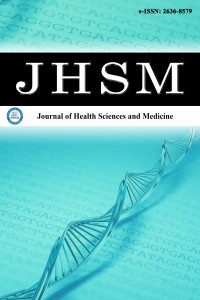1.
Baird DD, Dunson DB, Hill MC, Cousins D, Schectman JM. High cumulative incidence of uterine leiomyoma in black and white women: ultrasound evidence. Am J Obstet Gynecol. 2003;188(1):100-107. doi:10. 1067/mob.2003.99
2.
Serden SP, Brooks PG. Treatment of abnormal uterine bleeding with the gynecologic resectoscope. J Reprod Med. 1991;36(10):697-699.
3.
Ahrendt HJ, Tylkoski H, Rabe T, et al. Prevalence of uterine myomas in women in Germany: data of an epidemiological study. Arch Gynecol Obstet. 2016;293(6):1243-1253. doi:10.1007/s00404-015-3930-8
4.
Giuliani E, As-Sanie S, Marsh EE. Epidemiology and management of uterine fibroids. Int J Gynaecol Obstet. Apr 2020;149(1):3-9. doi:10.1002/ijgo.13102
5.
Borah BJ, Nicholson WK, Bradley L, Stewart EA. The impact of uterine leiomyomas: a national survey of affected women. Am J Obstet Gynecol. 2013;209(4):319-320. doi:10.1016/j.ajog.2013.07.017
6.
Stewart EA. Clinical practice. Uterine fibroids. N Engl J Med. 2015; 372(17):1646-1655. doi:10.1056/NEJMcp1411029
7.
Munro MG, Critchley HO, Fraser IS, Group FMDW. The FIGO classification of causes of abnormal uterine bleeding in the reproductive years. Fertil Steril. 2011;95(7):2204-2208. doi:10.1016/j.fertnstert.2011. 03.079
8.
Wamsteker K, Emanuel MH, de Kruif JH. Transcervical hysteroscopic resection of submucous fibroids for abnormal uterine bleeding: results regarding the degree of intramural extension. Obstet Gynecol. 1993; 82(5):736-740.
9.
Marshall LM, Spiegelman D, Barbieri RL, et al. Variation in the incidence of uterine leiomyoma among premenopausal women by age and race. Obstet Gynecol. 1997;90(6):967-973. doi:10.1016/s0029-7844(97)00534-6
10.
Stewart EA, Friedman AJ. Steroidal treatment of myomas: preoperative and long-term medical therapy. Copyright© 1992 by Thieme Medical Publishers, Inc.; 1992:344-357.
11.
Sato F, Miyake H, Nishi M, Kudo R. Fertility and uterine size among Asian women undergoing hysterectomy for leiomyomas. Int J Fertil Womens Med. 2000;45(1):34-37.
12.
Ross RK, Pike MC, Vessey MP, Bull D, Yeates D, Casagrande JT. Risk factors for uterine fibroids: reduced risk associated with oral contraceptives. Br Med J (Clin Res Ed). 1986;293(6543):359-362. doi:10. 1136/bmj.293.6543.359
13.
Parazzini F, Negri E, La Vecchia C, Chatenoud L, Ricci E, Guarnerio P. Reproductive factors and risk of uterine fibroids. Epidemiology. 1996; 7(4):440-442. doi:10.1097/00001648-199607000-00018
14.
Marshall LM, Spiegelman D, Goldman MB, et al. A prospective study of reproductive factors and oral contraceptive use in relation to the risk of uterine leiomyomata. Fertil Steril. 1998;70(3):432-439. doi:10.1016/s0015-0282(98)00208-8
15.
Wachsberg RH, Kurtz AB, Levine CD, Solomon P, Wapner RJ. Real-time ultrasonographic analysis of the normal postpartum uterus: technique, variability, and measurements. J Ultrasound Med. Mar 1994;13(3):215-221. doi:10.7863/jum.1994.13.3.215
16.
Hsu KF, Pan HA, Hsu YY, Wu CM, Chung WJ, Huang SC. Enhanced myometrial autophagy in postpartum uterine involution. Taiwan J Obstet Gynecol. 2014;53(3):293-302. doi:10.1016/j.tjog.2013.01.030
17.
Foth D, Röhl FW, Friedrich C, et al. Symptoms of uterine myomas: data of an epidemiological study in Germany. Arch Gynecol Obstet. 2017; 295(2):415-426. doi:10.1007/s00404-016-4239-y
18.
Monleón J, Cañete ML, Caballero V, et al. Epidemiology of uterine myomas and clinical practice in Spain: an observational study. Eur J Obstet Gynecol Reprod Biol. 2018;226:59-65. doi:10.1016/j.ejogrb.2018. 05.026
19.
Lacey CG. Myoma of the uterus. Current gynecologic and obstetric diagnosis and treatment 4<sup>th</sup> ed Lange, Los Altos. 1982.
20.
Puri K, Famuyide AO, Erwin PJ, Stewart EA, Laughlin-Tommaso SK. Submucosal fibroids and the relation to heavy menstrual bleeding and anemia. Am J Obstet Gynecol. 2014;210(1):38 e1-7. doi:10.1016/j.ajog. 2013.09.038
21.
David M, Pitz CM, Mihaylova A, Siedentopf F. Myoma-associated pain frequency and intensity: a retrospective evaluation of 1548 myoma patients. Eur J Obstet Gynecol Reprod Biol. 2016;199:137-140. doi:10.1016/ j.ejogrb.2016.02.026
22.
Cinar M, Tokmak A, Guzel AI, et al. Association of clinical outcomes and complications with obesity in patients who have undergone abdominal myomectomy. J Chin Med Assoc. 2016;79(8):435-439. doi:10. 1016/j.jcma.2016.02.008
23.
Wen KC, Horng HC, Wang PH. Hemorrhage: A strong indicator for myomectomy-related complication. J Chin Med Assoc. 2016;79(8):413-414. doi:10.1016/j.jcma.2016.02.004
24.
Gürbüz T, Yardımcı O, Udum S, Günay T. The relationship between body-mass index and clinical complications among patients undergoing myomectomy. J Surg Med. 2020;4(11):1027-1030.

